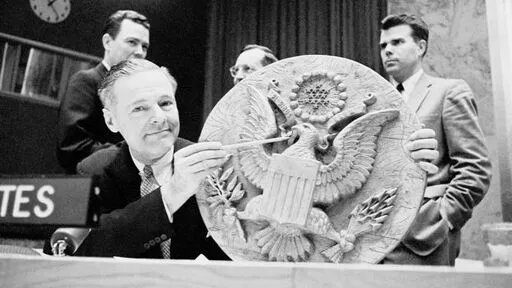'The most ingenious stunt since the Trojan Horse': The Soviet artwork that spied on the US
'The most ingenious stunt since the Trojan Horse': The Soviet artwork that spied on the US

'The most ingenious stunt since the Trojan Horse': The Soviet artwork that spied on the US

A listening device hidden in an artwork in 1945 was undetected by US security for seven years – and it's not the only example of art having been manipulated for subterfuge.
Eighty years ago, during the final weeks of World War Two, a troop of Russian boy scouts presented the US Ambassador in Moscow with a hand-carved Great Seal of the US, at his official residence – Spaso House. The gift symbolised cooperation between Russia and the US during the war, and the US Ambassador W Averell Harriman proudly hung it in his house until 1952.
But unbeknownst to the ambassador and his security team, the seal contained a covert listening device, later dubbed "The Thing" by US technical security teams. It spied on diplomatic conversations, completely undetected for seven years. By using a seemingly innocuous artwork to infiltrate the enemy and gain strategic advantage, the Soviets had pulled off the most ingenious stunt since Odysseus's Trojan Horse. But this is a true story, even if it sounds like the stuff of spy fiction.